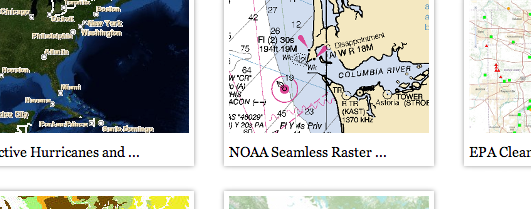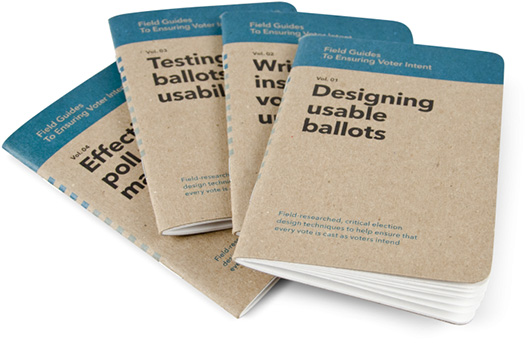Many agree that a combination of factors – a demand for better user experience, the rise of ubiquitous technologies and more readily accessible datasets – present the conditions necessary for a more enjoyable life as a citizen of our country. But necessity is just the mother of invention; it takes hard work to get there. To narrow the gap between today’s promises and tomorrow’s opportunities, designers are increasingly intent on improving what’s known as the citizen experience.
The trends aren’t difficult to see. Co-authors Joseph Pine and James Gilmore pointed out eons ago in the web world – back in 1998 – that we live an experience economy. Simply put, people are drawn to products and services that are more considerate of their experience. Additionally, by now, designers are well acquainted with the idea of mobile, ubiquitous computing. It’s hard not to be. It’s the subject of books, blogs, even whole conferences.
One consequence of these trends is data. Lots of it. Data.gov, a site created and maintained by the Obama administration’s Open Government Initiative, houses over 73,000 sets of the stuff. The sheer quantity available begs the question: what can designers do? The (short-term) answer is visualizations. With them, designers turn otherwise confusing arrays of numbers into useful information.

Map-based visualizations seem a relatively humble start, yet the examples appearing on sites such as Data.gov and Data.Seattle.gov readily manifest the power of mere juxtaposition.
Visualizations are only a small part of the story, though. What’s more valuable than the insights created by way of visualizations and others information technologies like them are the storytelling opportunities that these neo-journalism tools afford. By piecing together the narratives behind collective action, locally-minded people – citizens – can tell more cohesive stories about their communities and plan for change. In essence, today’s technological landscape provides a compelling opportunity for designers to affect a positive change across entire municipalities.
The citizen experience
After years of working in the private sector, Jess McMullin had an epiphany. At two in the morning – the Saturday before Christmas, 2009 – he made the not-too-hasty decision to leave the consultancy he had founded six years prior. Jess left his own company to work in the public sector because, in his words:
I’ve found public-sector work to be infinitely more meaningful than private-sector work. I guess that’s because, as an individual, I actually have faith and confidence in the government as a solution to societal problems.
Individually, we tend not to act in a way that’s attuned to our collective needs. The free market led us to the housing crisis and situations like Enron. Unregulated, it’s a sociopath. Government provides a solution to the tragedy of the commons.
Jess Mcmullin
Many of the designers with whom I spoke while researching this piece had a similar epiphany: the “tragedy of the commons” becoming too acute, and projects focused on the citizen experience appearing refreshingly greenfield by comparison. It led user researcher Cyd Harrell to more prominently introduce the term to the community in her article on UX Magazine titled “The Citizen Experience Needs Us: Why UX practitioners should join the Government 2.0 movement.” She says:
Lately, I’ve started thinking that our view of the human as a “user” is incomplete. Yes, interacting with interfaces does come down to using technology, but just as “customer” is a more comprehensive term in the commercial realm, we need another term to describe other important relationships in people’s lives.
Anyone applying for a business license or a building permit, paying taxes, looking up public records, or requesting benefits is participating in an interaction where they are something more than a user. These relationships aren’t exactly voluntary the way commercial relationships are, but at the same time, the public nature of these services makes the user a co-owner in a way that customers typically are not.
Most citizen experiences don’t properly reflect this reality although they should, and it’s interesting to think about how they’d be different if they did.
Cyd Harrell
In other words, the citizen experience is a direct result of the platform provided by a municipality. While its opportunities aren’t as readily apparent, they’re no less important to would-be civic designers.
The civic design spectrum
The gap between today’s user-centered designers and tomorrow’s civic designers is closing, albeit slowly. That’s partially because citizen experience is a relatively nascent idea (to us), and partially because the resources available to designers are few and far between. It’s a bit of a chicken and egg scenario. Some resources do exist, though: Jess McMullin, mentioned above, wrote a guide called Getting into Government Consulting detailing his lessons from the trenches; researchers Nate Bolt and Tony Tulathimutte wrote an account of their work with Stanford University, helping get the word out about Swine Flu; and designers Elizabeth Buie & Dianne Murray co-edited a book called Usability in Government Systems, which acts as a good primer.

Dana Chisnell’s Field Guides to Ensuring Voter Intent were funded through Kickstarter and designed by Oxide Design Co.
Other designers have simply jumped in head first, making a name for themselves by taking part in what author Jon Kolko calls social entrepreneurship. Social entrepreneurship works just like its conventional counterpart except that social entrepreneurs seek to solve humanitarian problems rather than sell products. Dana Chisnell’s Field Guides to Ensuring Voter Intent and Laura Amico’s Homicide Watch serve as good examples, in addition to joint-ventures such as Random Hacks of Kindness (sponsored by Microsoft, Google, Yahoo!, NASA, and the World Bank).
What’s clear is that civic design projects run the gamut – some are visualizations, some are physical objects, and some are quasi-public services. Is there any consensus as to what citizens actually want from the government of the future? This summary, accompanying an Accenture study from 2012, suggests an answer:
The majority of people say they would use digital services if offered by government, especially for routine transactions. And over half want to conduct all their government business digitally in the future. The biggest challenge for government is not catching up with the private sector—it’s giving digital citizens what they want while using digital channels to improve public value.
Laying aside the ambiguity of “public value” for a moment, it seems sensible to conclude that the primary way to increase that value would be to give each citizen a voice, helping them take part in their own democracy. San Francisco’s online service center, @SF311, does just this.
As Cyd explains (in the same article mentioned earlier):
One day last summer, driving through Golden Gate Park on one of our notoriously freezing and foggy June mornings, I noticed sprinklers in full spray all along a major road, wasting large quantities of water. Having recently heard about the service, I tweeted @SF311, and within 45 minutes I had a helpful response assuring me that it would be checked out. The next day when I drove the same route, the sprinklers were off.
Cyd Harrell
Tools such as SF311 are equal parts fascinating and vexing. While one the one hand they liberate – empowering citizens – on the other hand they also represent of an entire class of products and services that are often unheard of until after they’re built.
Better government for everyone
Anyone who’s interacted with an office of their local government knows that the public sector works as best as it can to serve the needs of its constituents. Organizations frequently adopt and adapt solutions along the way which inevitably introduces inefficiencies. Inefficiency, however, is something for which user-centered design is well suited. It’s just rarely the case that these two parties meet in the middle, despite the fact that they have so much to gain from one another.
This disconnect prompted Jennifer Pahlka – a former game-industry leader turned social entrepreneur – to found a civic-design organization called Code for America. Code for America is best described by way of analogy, drawing comparisons to both Teach for America and Peace Core (but for geeks). At its heart, the organization facilitates is a year-long fellowship program, recruiting designers and developers to scope and solve public-sector problems in collaboration with local governments.
In a nutshell:
- Designers and developers apply from all over the country,
- Next, a handful are chosen to participate in the San Francisco-based program,
- Finally, states sponsor a group of fellows to come onsite and collaboratively solve government problems in a user-centered way.
Participation in the program is as much a learning opportunity as it is a gesture to shared future of our nation. The following video provides insight into one of the projects that came out of last year’s program:
Fellows from Code for America describe their latest collaboration with a city government, a website built for Honolulu’s City Hall.
Readers interested in transitioning into the the civic design space are highly encouraged to apply for the 2014 fellowship.
What tomorrow feels like
The most fascinating thing about citizen experience design is that it’s taken so long to come to the fore. The problem space begins with a question that’s pertinent to all of us: what’s it like to be a resident of a town or city? And how could that be better? Living somewhere is “an experience” most do not think of “choosing;” our parents made that decision for us. But as we grow up we do have a choice: do we keep things as they are or do we choose to make our future government better than we found it?